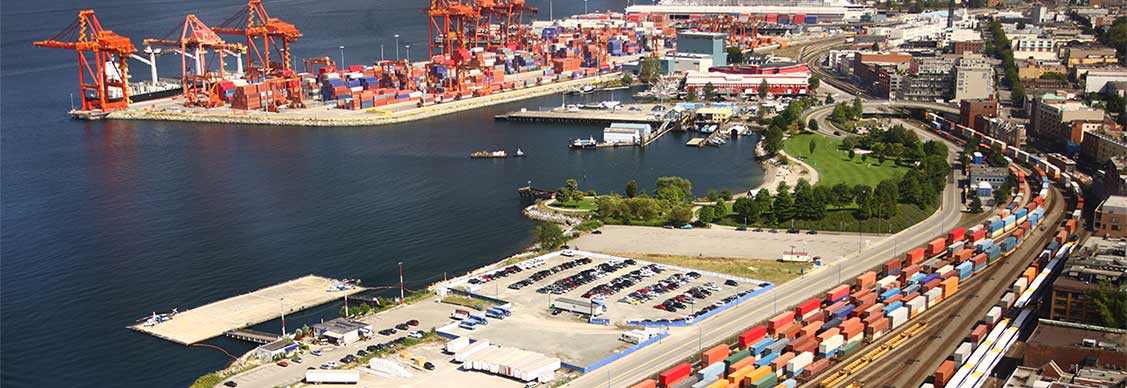How the shift to railways is keeping supply chains on track
Speed and sustainability are of the essence for today’s companies and logistics providers
As logistics providers, retailers and manufacturers look for faster, greener ways to transport their goods, railways are coming back into favour – leading to a flurry of development around key stations and terminals.
Drinks manufacturer Coca-Cola is one of those making the switch from road to rail, partnering with DB Cargo in Germany for nationwide distribution. In the UK, former passenger trains are delivering parcels to city centres before handing them over to van or bicycle couriers.
“Historically, rail freight may have meant slow, loud and polluting trains,” says Ashley Smart, EMEA logistics development director at JLL. “But with speed of delivery and reliability now mattering more than ever, despatching goods by rail is now being seen as a more sustainable and more efficient option for supply chain managers.”
Rail networks, too, are growing. Logistics business InterCity RailFreight now has links with over 100 daily, 125 miles-per-hour rail services in the UK as part of its same day logistics service.
Meanwhile, Germany’s DB Cargo launched daily rail connections between Europe’s two largest ports, Rotterdam and Antwerp, and major German cities, last year.
Taking the green route
Part of the move to rail comes from a growing focus on sustainability within the logistics industry.
Each tonne of freight transported by rail produces 76 percent less carbon emissions compared to road, according to recent research by the Rail Delivery Group and Deloitte.
Coca-Cola’s switch in Germany is expected to annually save around 1,900 tons of carbon emissions, with freight trains replacing around three million lorry kilometres. DB Cargo’s new rail routes are set to take 70,000 lorries off the roads.
“The transport of goods is a major contributor to greenhouse gas emissions,” says Smart. “As more corporates and logistics providers set net zero commitments, there’s growing momentum to find alternatives to today’s diesel lorries. Rail is an attractive option.”
The European Commission’s Sustainable and Smart Mobility Strategy aims for a 50 percent increase in rail freight transport by 2030, and a doubling by 2050.
New warehouses in the works
Logistics service provider CargoBeamer, which recently opened its Calais to Perpignan in France route, plans to build 20 freight terminals across Europe by 2030. Where the railways expand, new warehouses are not far behind. In Poland, global real estate developer Hillwood and logistics developer Panattoni are both building warehouses as rail links are improved and upgraded.
“There’s a pressing need for warehouse units that can support terminals for a range of delivery needs, from short-term cargo turnarounds to a place for sorting goods as they move along the supply chain,” says Smart. “The operational resilience that rail offers needs to be matched by top quality warehouse facilities.”
Elsewhere, existing hubs are being expanded to meet rising demand. In the UK, the third phase of the Daventry International Rail Freight Terminal (DIRFT) is underway, increasing its handling capacity to 32 trains per day.
The site, which is being developed by Prologis, will be the biggest inland rail freight terminal in the UK. Supermarket chains Sainsbury's and Tesco have distribution centres at the site, as do Royal Mail and DHL.
Looking for more insights? Never miss an update.
The latest news, insights and opportunities from global commercial real estate markets straight to your inbox.
Logistics fit for the future
While rail is undoubtedly seeing an uptick in interest, challenges remain.
“Issues such as accompanying infrastructure capable of handling increased volumes are potential stumbling blocks,” he says. “Infrastructure costs can be high and so it often requires major logistics developers to take on the challenge.”
In July, Oxford Properties Group and Logistics Capital Partners announced a £1 billion joint venture to create one of the UK’s biggest logistics sites with a new strategic rail freight interchange.
Smart says that many 3PLs, manufacturers and grocers see the potential of rail as they evolve their transport networks to meet the demands of modern living.
“Rail freight needs to be part of a multi-modal approach, factoring in other courier methods such as cargo bikes and even trams,” he says. “But for long distance transportation between cities and across countries, it is a growing part of the mix.”
